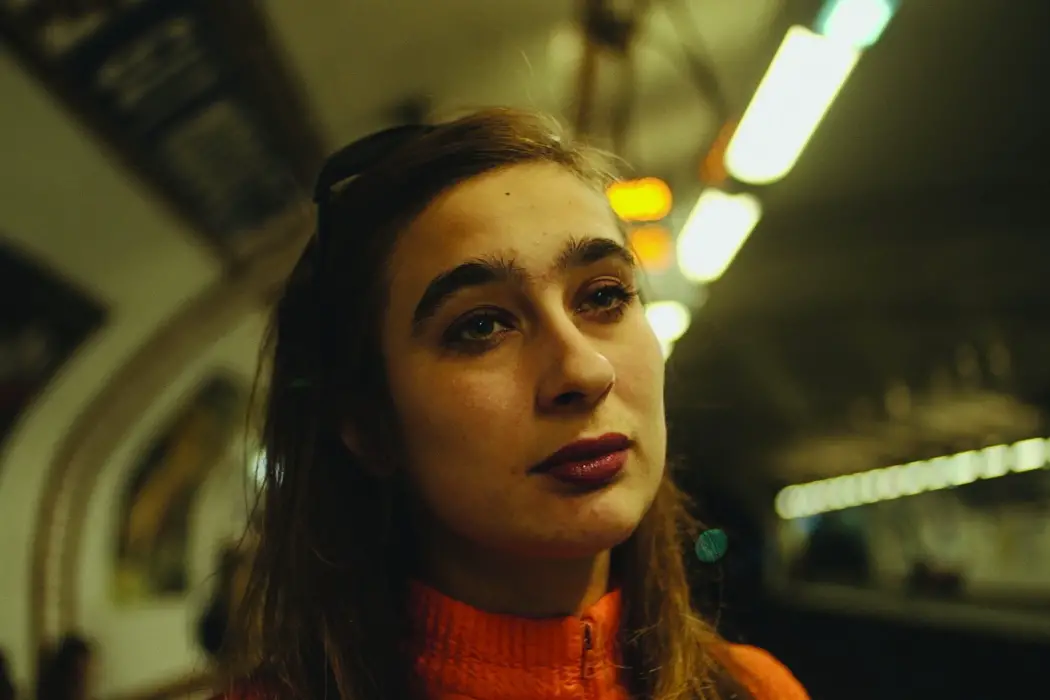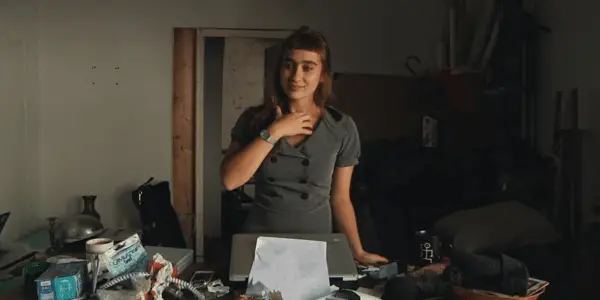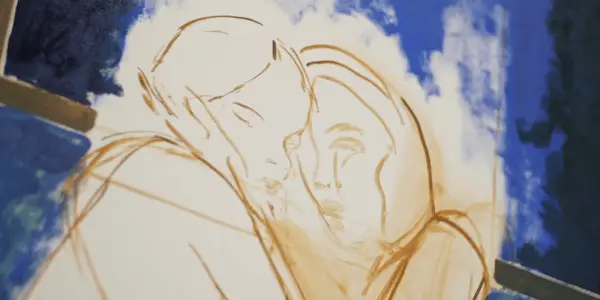APOLONIA, APOLONIA: Portrait Of An Artist By A Filmmaker

Soham Gadre is a writer/filmmaker in the Washington D.C. area.…
Notable exceptions like Steve James in Stevie, Banksy in Exit Through the Gift Shop, and several Werner Herzog films aside, I’m generally averse to documentary filmmakers heavily relying on voice-overs and going even further and inserting themselves as a tangential subject in their documentary. One of the limitations this generally causes most immediately is there being two distinct artistic thesis running consecutively, which often never coalesce in interesting ways. The other is that by inserting oneself as a subject alongside the actual subject, there is an artificiality that becomes self-aware and takes away from the authenticity of what is being documented.
The Camera and the Easel
In Apolonia, Apolonia, the film’s actual subject, Danish artist Apolonia Sokol, tells the documentary’s filmmaker Lea Glob that the “camera is the evil eye”. The confluence of the visual imagery of the camera and that of a painting is a constant theme in the documentary, which tends to grapple with the voyeuristic nature of the former and the piercing self-examination of the latter. Apolonia Sokol is an artist who does not shy away from themes of gender and sexuality, and was distinctly exposed to both at a young age when she watched the sex-tape of her parents conceiving her in their apartment. This level of direct shocking intimate knowledge is laid atop a childhood that was surrounded by artists and art.

Artistic Rebel vs Industry Product
Glob clearly wants to make the visual medium of cinema a known part of the artistic sphere in and of itself in addition to the actual subject of Apolonia’s paintings. The documentary has a pace that matches the journey Apolonia is on from being a fledgling art student to becoming what he friends cynically joke is an ‘industry product’. If the major drawback of the documentary is that Glob leans a little too much on explaining the journey – strange for a clearly talented visual artist in her own right and it tends to undercut the very energetic camerawork on display that showcases both the streets of Paris and the nightclubs with a disorientation that evokes an artist’s exponential launch towards stardom.

Conclusion
Apolonia says of her art that “It’s not a project, it’s something that started when I was born and never stopped.” This feeling forms the DNA of the documentary. He art, her personal life, the conversations and kisses and hugs she shares are all intertwined in a cyclone of human experience that is inseparable from the paintings she does. While Glob tends to lay the social and gender critique at a surface level, often popping in to form the narrative rather than let it develop naturally through the film, Apolonia Apolonia still manages to paint a fairly engaging portrait of an artist discovering the intimate balance between success, her place in the world as a woman, and her freedoms as an artist.
Apolonia, Apolonia was released in New York City theaters on January 12th
Does content like this matter to you?
Become a Member and support film journalism. Unlock access to all of Film Inquiry`s great articles. Join a community of like-minded readers who are passionate about cinema - get access to our private members Network, give back to independent filmmakers, and more.
Soham Gadre is a writer/filmmaker in the Washington D.C. area. He has written for Hyperallergic, MUBI Notebook, Popula, Vague Visages, and Bustle among others. He also works full-time for an environmental non-profit and is a screener for the Environmental Film Festival. Outside of film, he is a Chicago Bulls fan and frequenter of gastropubs.













